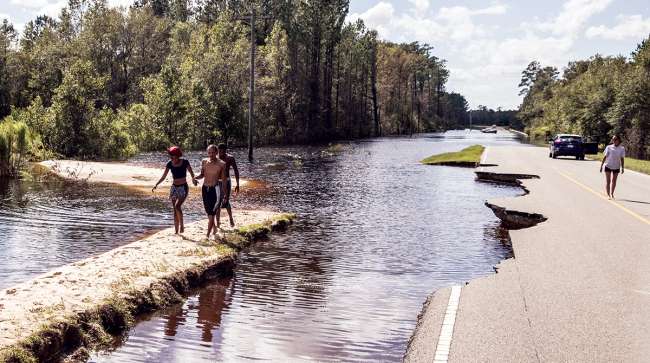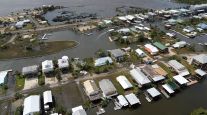Senior Reporter
Federal Officials Highlight Disaster Mitigation Program

[Stay on top of transportation news: Get TTNews in your inbox.]
WASHINGTON — A Federal Emergency Management Agency official addressing a House transportation panel Oct. 22 touted a disaster mitigation program established last year.
Jeffrey Byard, associate administrator for response and recovery at FEMA, said the Building Resilient Infrastructure and Communities, or BRIC, which was established via the enactment of last year’s Disaster Recovery Reform Act, will be “transformational.”
“It will allow FEMA to support states and communities as they undertake new and innovative infrastructure projects that reduce the risks they face from disasters. The BRIC program aims to categorically shift the federal focus away from reactive disaster spending and toward research-supported, proactive investment in community resilience,” Byard told the Transportation and Infrastructure Committee in prepared remarks.

Byard
“FEMA is already using the funding set aside for BRIC to advance the objective of reducing disaster risk,” he added.
BRIC is meant to incentivize innovative infrastructure projects capable of withstanding the impact of severe weather events. Funding for the program will stem from a 6% set-aside from disaster grants.
Besides FEMA, the Department of Commerce’s Economic Development Administration also has set out to promote resiliency. The agency has awarded grants to communities in response to weather events that have interrupted freight and commuter connectivity. For instance, the agency recently awarded Texas $48 million to assist agencies with preparedness efforts and expansion projects.
“A strong economy is critical to helping communities hit by natural disasters get back on their feet, and the administration’s successes in cutting taxes, reducing regulatory burdens, and negotiating free and fair trade agreements are helping to ensure that the economic outlook continues to improve,” Dennis Alvord, deputy assistant secretary for economic development and chief operating officer at the Economic Development Administration, said in prepared remarks.
He went on to explain to lawmakers the agency’s role in disaster recovery is to “facilitate the timely and effective delivery of federal economic development assistance to support long-term community economic recovery through planning and project implementation, redevelopment and resiliency.”
After Texas, Florida, Puerto Rico and the U.S. Virgin Islands were hit by severe hurricanes, policymakers renewed discussions about climate-resilient infrastructure proposals. A priority for many Democrats has been to ensure infrastructure projects withstand the force of severe storms to guarantee the flow of goods and services.

DeFazio
Rep. Peter DeFazio, the top transportation policymaker in the House, raised the issue at the start of the Oct. 22 hearing as his committee and Senate counterparts continue to craft comprehensive highway policy legislation.
DeFazio, an Oregon Democrat, explained, “What more can we do for resilience, essentially prevention — preventing a loss of life, preventing loss of infrastructure.”
Rep. Kathy Castor (D-Fla.), chairwoman of the House Select Committee on the Climate Crisis, also has called on colleagues to address the link between climate change and infrastructure.
Since the start of the year, members of her caucus have advanced funding for coastal protection programs, and mitigation, and disaster response efforts. Her fellow Democrats also have approved policies meant to foster climate resilience, she explained.
“This is just the start of climate action in this Congress,” Castor said during the marking of the congressional session’s first 200 days. “Americans overwhelmingly support climate action, and we’re going to deliver.”
A Senate highway bill a committee approved over the summer proposed climate-resilient policy, while the House fiscal 2020 transportation funding measure took on the matter. According to a report that accompanied the House legislation, lawmakers called for new construction to “address the risk of structure failure or loss of use from natural hazards throughout the lifetime of the project.”
Want more news? Listen to today's daily briefing:




